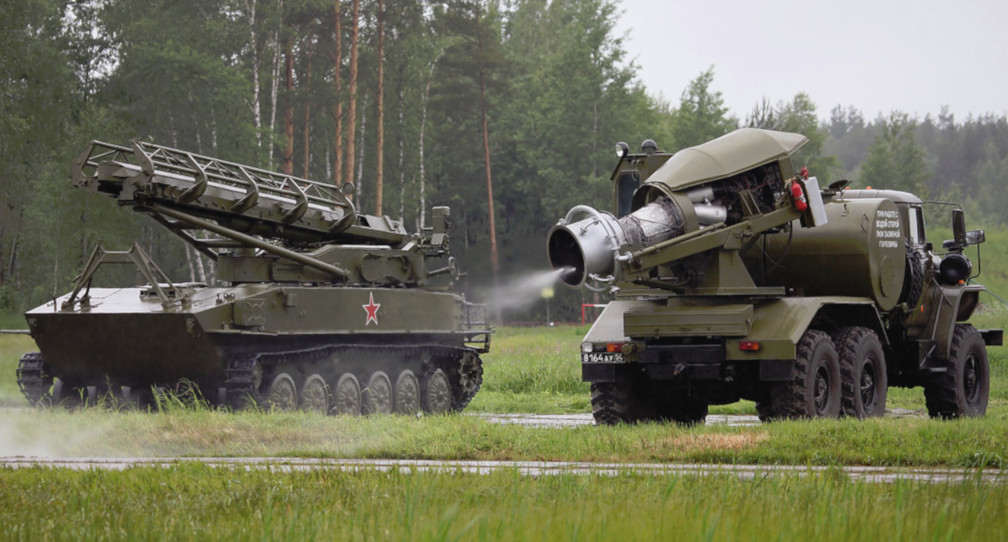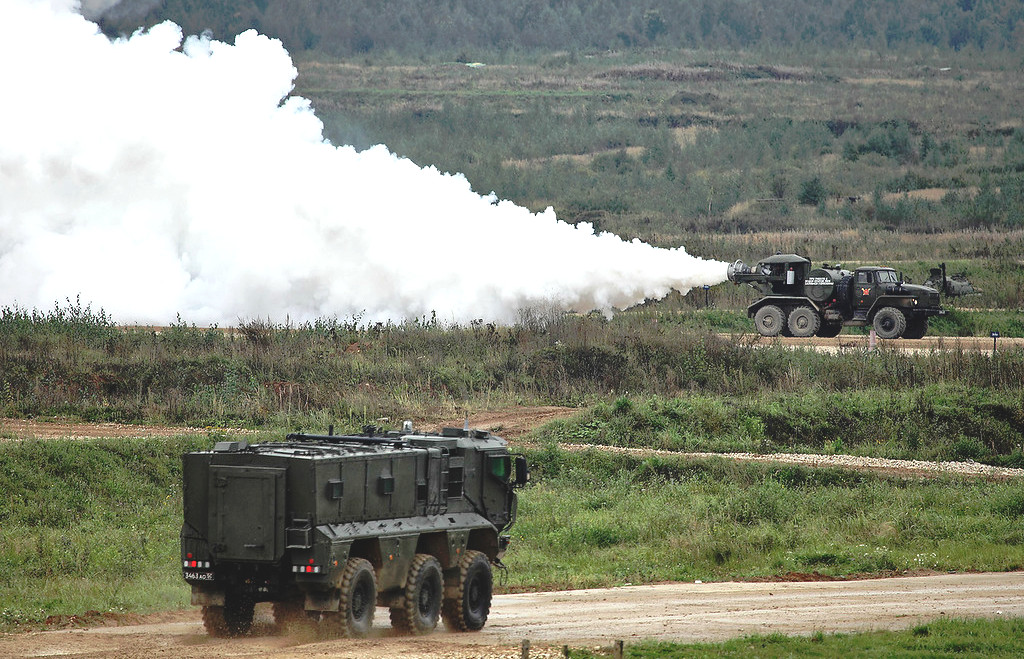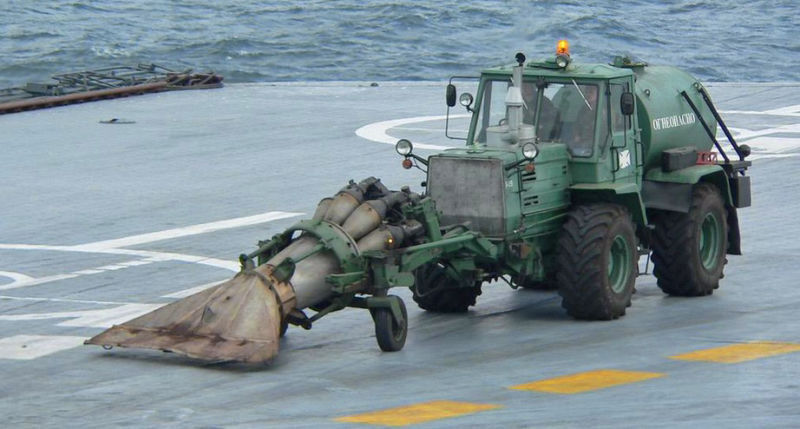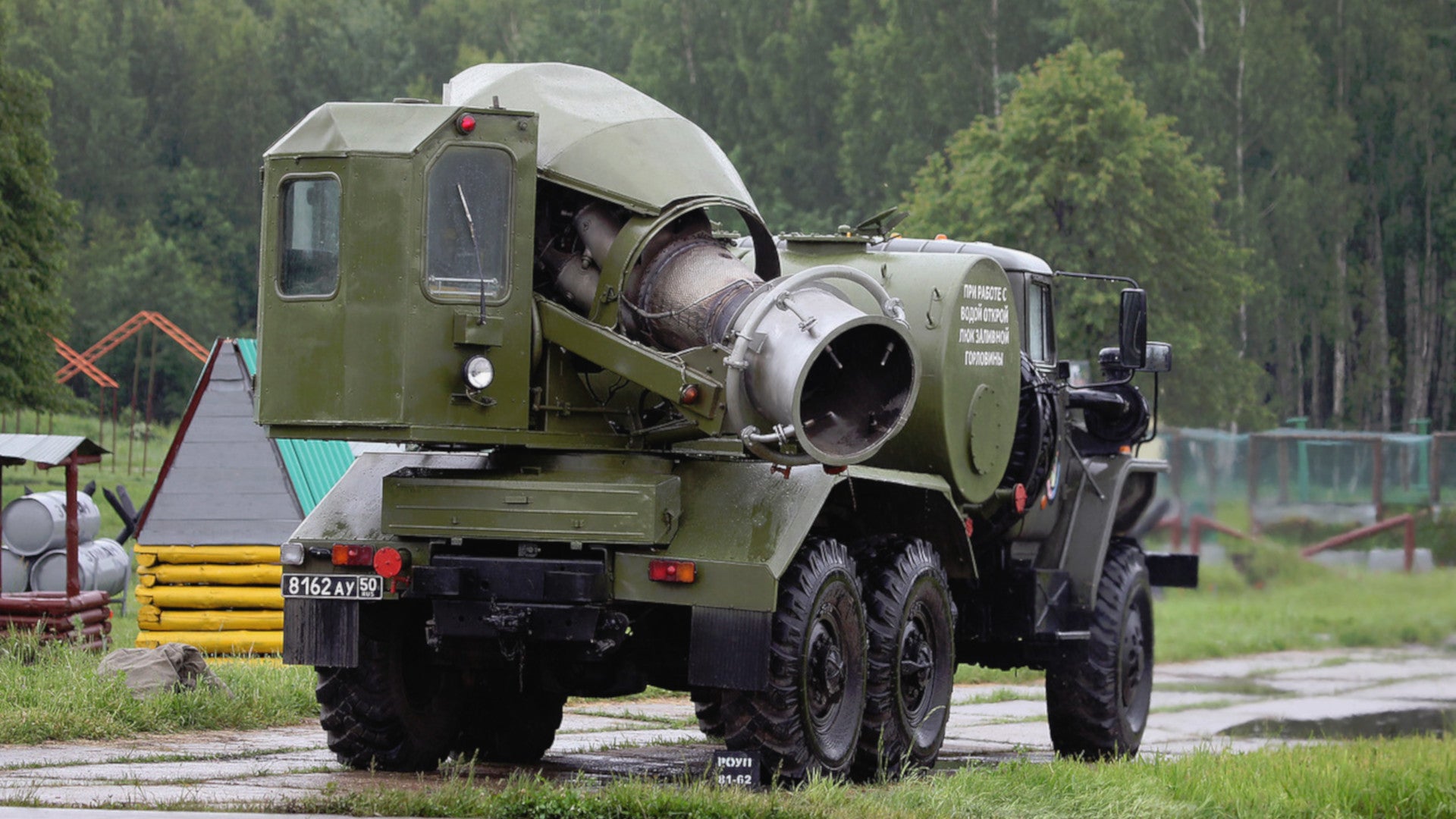Russia’s Nuclear, Biological, and Chemical Protection Troops, also known collectively by the acronym RKhB, are celebrating the 100th anniversary of their formation in 2018 and the country’s Ministry of Defense has recently released a video montage of these units in action to mark the occasion. Among the more unusual systems on display is a truck with a jet engine mounted in the back, called the TMS-65U, which crews can use to clean vehicles coated in chemical agents or create massive smokescreens to hide friendly movements on the battlefield.
The RKhB traces its history to 1918 and the formation of chemical warfare units in what was then the fledgling Soviet Union. Today, these elements are focused largely on identifying nuclear, biological, and chemical hazards and decontaminating on friendly forces and impacted areas. They’re on hand to provide similar services after any terrorist attack involving weapons of mass destruction or man-made or natural disasters involving similar threats.
As is the case with chemical units in other modern militaries, including that those in the United States, they are responsible for the deployment of large smokescreens during major combat operations, as well. Historically, flamethrowers have also been the provenance of military chemical warfare elements and in Russia, the RKhB is still responsible for the TOS-1 self-propelled thermobaric artillery rocket system and the man-portable RPO-series of thermobaric rocket launchers. The Russians define both of these weapons as “flamethrowers,” despite them having virtually nothing in common with traditional weapons of that type.
When it comes to washing down vehicles and personnel that might be covered in chemical agents, an issue you can read about in far more depth here, Russia has various options, including truck-mounted and individual spray systems that personnel can use to wipe away hazardous materials. They also have the Soviet-era TMS-65U.

“TMS” in this case stands for “teplovoi mashinii spetzialnoi,” which literally translates as “special heat engine.” There’s probably no better way to describe the system, which consists of a Ural-375 6×6 4.5-ton truck with a modified Klimov VK-1 turbojet engine – first used in the MiG-15 fighter jet in 1947 – mounted inside a turret on the rear of the vehicle.
The complete system feeds decontamination fluid into the exhaust to rapidly clean vehicles or structures. An operator in the turret can maneuver the jet engine left and right and up and down in order to best aim the blast at the intended object.

The entire process is far faster than personnel using hand-held hoses or brushes to scrub away potential chemical weapons. A common procedure involves setting up TMS-65Us along a path as a sort of impromptu battlefield car wash, quickly cleaning vehicles in turn as they pass through.
It’s certainly a time-efficient system, but one has to wonder how much fuel is required to run the aging VK-1 for extended periods of time. The vehicle itself carries less than 240 gallons of jet fuel for the engine.
The TMS-65U also has a secondary role as a smokescreen vehicle. Crews can fill the same tank that holds the decontamination solution with a smoke-creating liquid, such as fuel oil, instead. The hot exhaust gasses then turn this fluid into a thick white smoke that can obscure friendly forces, at least to the naked eye and certain visual sensors. Unless there are specialized additives, this would not be able to prevent hostile forces from observing those movements using infrared optics.

But perhaps the most interesting thing about the vehicle is the continuing use of the VK-1. This jet engine is an absolutely antique design and is itself a derivative of the Rolls-Royce Nene, which first ran in 1944. In addition to the MiG-15, the Klimov engines also powered the MiG-17 fighter jet and the Il-28 light bomber.
As the Soviet Union began to remove those aircraft from service, it found itself with a surplus of VK-1s and the production lines to continue making spare parts. The TMS-65s, and improved TMS-65Us, were just some of a slew of military and civilian vehicles, along with specialized railroad cars, that continued to employ the engine in non-traditional roles.
Many of these other vehicles, such as ones that use their jet engines to rapidly clear snow from aircraft at airports or from railroad tracks, are or were still in operation until very recently – an impressive service life for an engine design more than seven decades old. The Russian military even has versions that use the VK-1’s exhaust to blast away potentially hazardous debris from airfields and the deck of its lone aircraft carrier, the Admiral Kuznetsov.

Though uncommon, there are other examples of jets in use on the ground in novel roles around the world, including snow removal and fire-fighting. Few, though, recycle old engines to the degree the Soviets did with the TMS-65U and other vehicles.
The Hungarians, however, did use the Klimov engine as a truck-mounted fire-fighting apparatus to choke off huge blazes, especially burning oil wells. Hungary also developed a larger system, called Big Wind, using modified World War II-era T-34 tank chassis equipped with a turret packing a pair of Tumansky turbojets taken from retired MiG-21 fighter jets. Both the VK-1-equipped trucks and the fire-fighting tanks went to Kuwait in 1991 to help put out oil field fires that Iraqi dictator Saddam Hussein’s forces had set as they fled the country in the face of a U.S.-led coalition.

When it comes to the TMS-65U, there is no indication that Russia intends to replace these vehicles any time soon. They clearly have a firm role within the Russian military’s chemical warfare defense doctrine.
But there may come a time when the Russians decide the VK-1s are finally too dated and inefficient to keep using in this and other ground-based roles.
Contact the author: joe@thedrive.com
